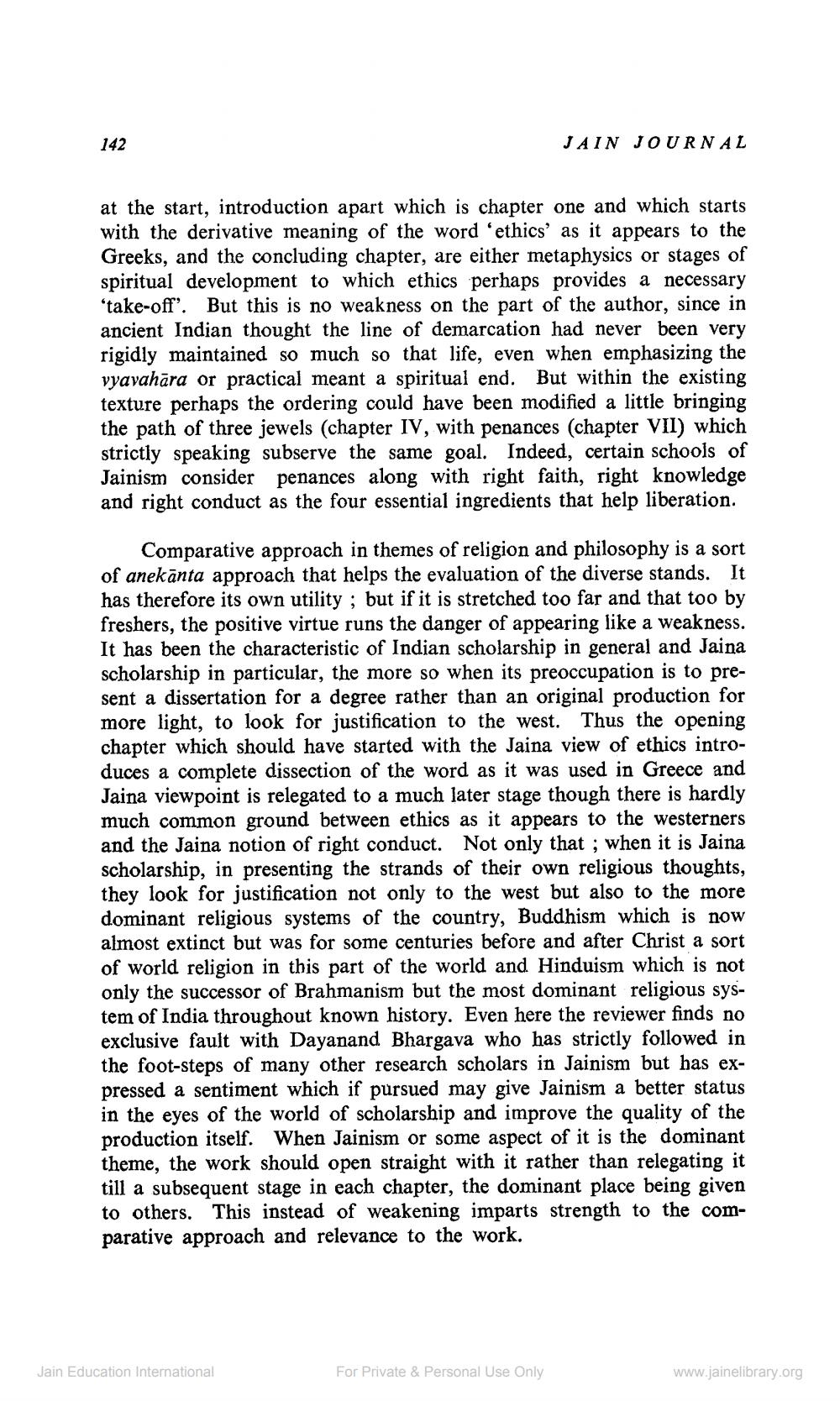Book Title: Jain Journal 1969 01 Author(s): Jain Bhawan Publication Publisher: Jain Bhawan Publication View full book textPage 6
________________ 142 JAIN JOURNAL at the start, introduction apart which is chapter one and which starts with the derivative meaning of the word 'ethics' as it appears to the Greeks, and the concluding chapter, are either metaphysics or stages of spiritual development to which ethics perhaps provides a necessary 'take-off'. But this is no weakness on the part of the author, since in ancient Indian thought the line of demarcation had never been very rigidly maintained so much so that life, even when emphasizing the vyavahāra or practical meant a spiritual end. But within the existing texture perhaps the ordering could have been modified a little bringing the path of three jewels (chapter IV, with penances (chapter VII) which strictly speaking subserve the same goal. Indeed, certain schools of Jainism consider penances along with right faith, right knowledge and right conduct as the four essential ingredients that help libera Comparative approach in themes of religion and philosophy is a sort of anekānta approach that helps the evaluation of the diverse stands. It has therefore its own utility ; but if it is stretched too far and that too by freshers, the positive virtue runs the danger of appearing like a weakness. It has been the characteristic of Indian scholarship in general and Jaina scholarship in particular, the more so when its preoccupation is to present a dissertation for a degree rather than an original production for more light, to look for justification to the west. Thus the opening chapter which should have started with the Jaina view of ethics introduces a complete dissection of the word as it was used in Greece and Jaina viewpoint is relegated to a much later stage though there is hardly much common ground between ethics as it appears to the westerners and the Jaina notion of right conduct. Not only that ; when it is Jaina scholarship, in presenting the strands of their own religious thoughts, they look for justification not only to the west but also to the more dominant religious systems of the country, Buddhism which is now almost extinct but was for some centuries before and after Christ a sort of world religion in this part of the world and Hinduism which is not only the successor of Brahmanism but the most dominant religious system of India throughout known history. Even here the reviewer finds no xclusive fault with Dayanand Bhargava who has strictly followed in the foot-steps of many other research scholars in Jainism but has expressed a sentiment which if pursued may give Jainism a better status in the eyes of the world of scholarship and improve the quality of the production itself. When Jainism or some aspect of it is the dominant theme, the work should open straight with it rather than relegating it till a subsequent stage in each chapter, the dominant place being given to others. This instead of weakening imparts strength to the comparative approach and relevance to the work. Jain Education International For Private & Personal Use Only www.jainelibrary.orgPage Navigation
1 ... 4 5 6 7 8 9 10 11 12 13 14 15 16 17 18 19 20 21 22 23 24 25 26 27 28 29 30 31 32 33 34 35 36 37 38 39 40 41 42 43 44 45 46 47
